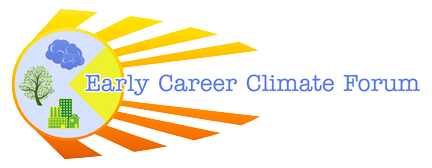Communicating your research – A mental obstacle course
I recently had an experience that felt like the mental equivalent of a hot, muddy, exhausting, physically scarring, and obstacle-filled endurance Bone Frog Challenge race that I ran a couple years ago. Only this time I was comfortably seated in an auditorium.
I was at a Paula Poundstone stand-up comedy show. You may know her from her guest appearances on the NPR news quiz show “Wait, wait! Don’t tell me!”, but she’s been doing stand-up comedy for decades. She was hilariously entertaining, full of up-to-date material and interesting insights. Perhaps most impressive was her ability to work the crowd and turn their comments into comedy on the spot. At one point she asked who had recently used Powerpoint at work and, before I knew it, she was asking me about what I do for a living in front of a sold-out crowd.
You’ve probably heard that every researcher should have an “elevator pitch,” a two-minute version of their research story that is both comprehensive and engaging to a non-specialist. This can be quite a challenge to most of us, as there are three requirements in this scenario that scientists are not trained to excel at: be brief, non-technical, and relatable. My experience as Paula Poundstone’s target in her comedic act put me to the test to meet these challenges and then some.
First, I had to be brief. Although Paula ended up calling out and talking to me from the stage for more than 20 minutes, most of that time was spent with her cracking jokes and going off on tangents (fair enough, it was her show). Then she would randomly come back to me and ask questions like “So how does trapping red squirrels tell you about climate change?”, and I would have to succinctly respond to her question. This brevity was reinforced by the fact that I had to shout everything to her through cupped hands from the 10th row, and she in turn repeated back what I said, human megaphone style, to the rest of the audience.* Thus, brevity was strictly enforced.
Second, I had to use non-technical language. For example, the very first thing I said was that I used “surveys” to look at shifts in elevation of the squirrels I study. Fortunately she didn’t hear me so I had a chance to rephrase to, “I use surveys to look at how animals are moving up the mountain!” Her response was “Surveys?!” and went on to make a joke about what she thought I meant. Right, surveys – not a readily accessible term, at least not in the way I intended it. Every exchange was like that.
Third, I had to make my research relatable, or at least of general interest. Why would the dentist in the 23rd row care about my wildlife research? Why would a comedian, for that matter? I reminded myself Short, clear, and interesting responses. “Red squirrel research because they eat birds!” “Climate change research because it causes animals to move around!” I felt like I was out of breath after every interaction, using every ounce of mental energy to communicate my science and convey why it is important.
Finally, I added an extra criterion: I wanted to be funny. Or at least I wanted to respond in a way that teed up Ms. Poundstone, the expert, to create laughs. We often consider making your research sound interesting as a requirement for communicating it effectively, but this was a special kind of challenge. Fortunately for me, Paula Poundstone doesn’t need much help creating comedy.
It’s perhaps not a situation that would be accidentally encountered very often, but maybe it is worth re-creating or trying. By the end of our interchange, I felt like I had just rerun that grueling obstacle course. The payoff was worth it though – it’s not often you get to tell 400 members of the public about your research. Afterward, audience members greeted me like a celebrity. More importantly, all of my shortcomings were laid bare, and I know now what I need to improve upon. Starting with using “count” instead of “survey”…
* I was later reassured by friends in the balcony that they could hear everything I said. (This will come as no surprise to those who know me).
Toni Lyn is a USGS Research Ecologist with the Department of Interior Northeast Climate Science Center.
NOTE: Comments will be visible to the public. Before commenting for the first time, please review the ECCF's Editorial Policy.


 Toni Lyn Morelli
Toni Lyn Morelli
Add comment